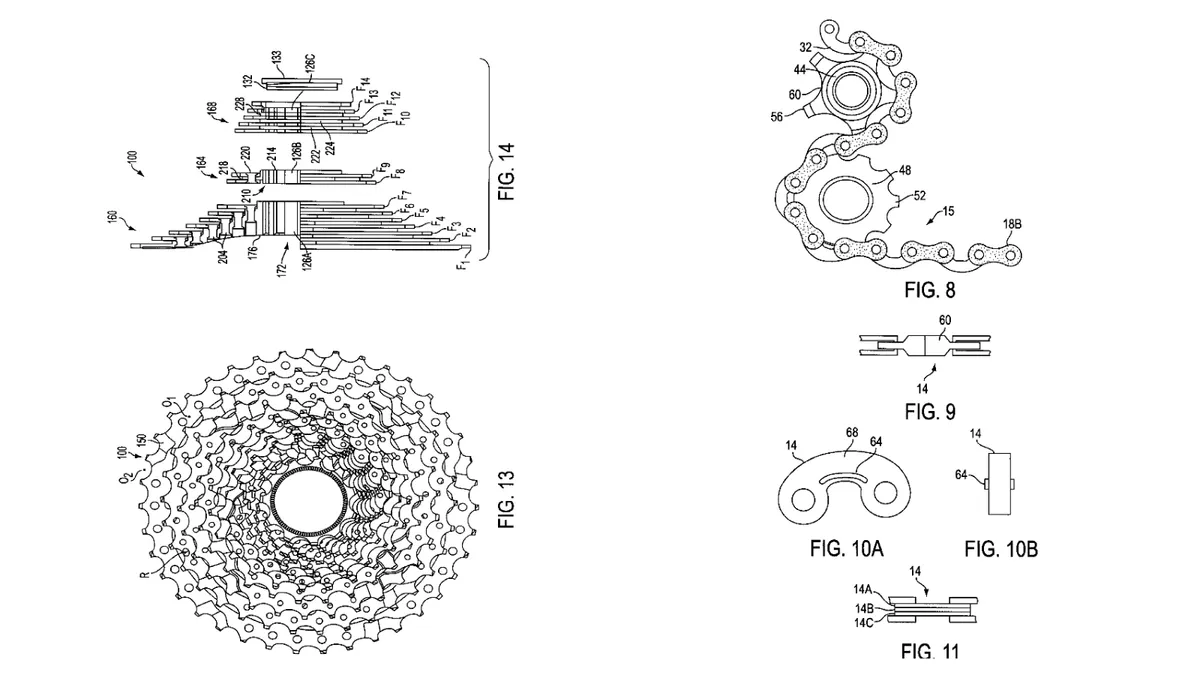Browsing Google patents is often quite fruitful if you're looking for juicy morsels of new tech, and we’ve stumbled upon all sorts of interesting stuff in the past. But this particular patent (US 5954604 A) filed by Shimano in 1999 that describes a drivetrain built around a 14 speed cassette is among the most fascinating yet.
- How SRAM and Shimano are looking to perfect the 1x chainline
- Revealed: why inner tubes smell of fish
Before we start, it’s worth bearing in mind that this patent is very, very old in terms of bike tech; things move at an astonishing pace and this article should be viewed as more of an insight into a design that could have been, or on the other hand, one that may inspire future developments as the ‘more speeds are better-er’ arms race inevitably rages on.
It’s also worth noting that the patent mentions applying some of the described designs to ten speed drivetrains, and some of what’s described can be clearly seen in today’s groupsets.
Lastly, the wording of the patent is as dense as the cluster of cogs it describes (sorry), and while I’ve done my best to decipher it, it’s purposefully vague in places. A good example is referring to the cassette as a “plurality of sprockets”, which took a bit of working out at first, but continues to tickle me even now.
How do you make a 14 speed cassette?
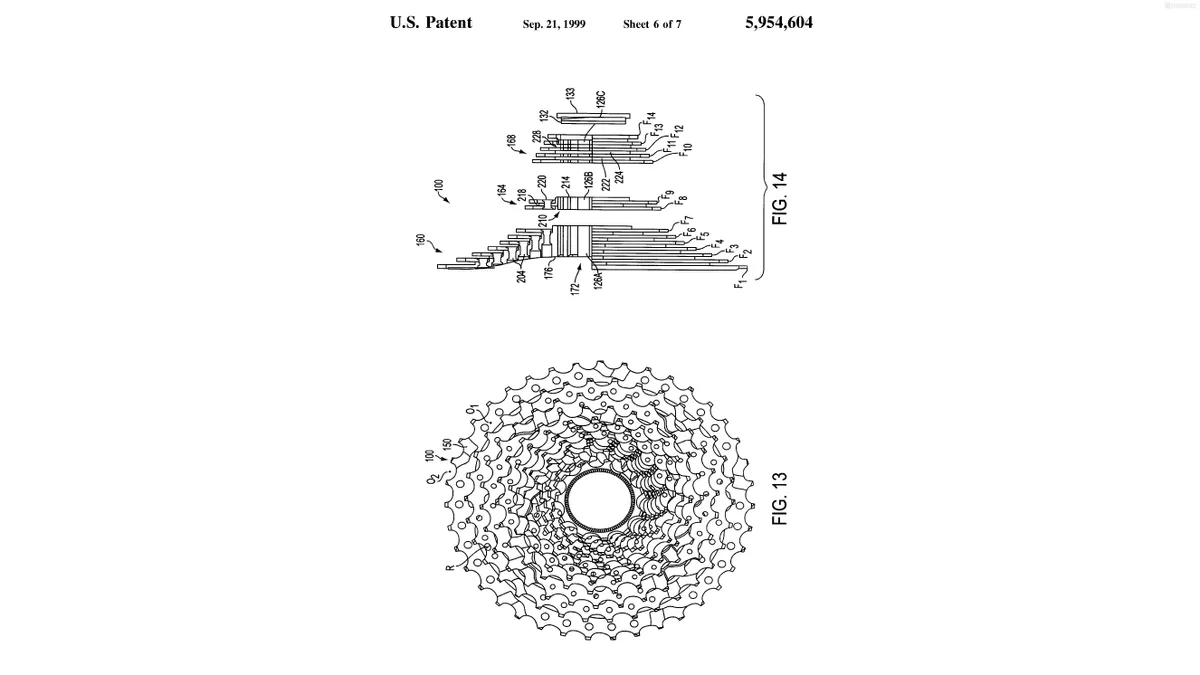
The patent starts by stating that “it is desirable to increase the number of sprockets, particularly in the rear freewheel, to provide the bicyclist with a greater choice of gears”, but that “in order to fit more sprockets into the available space, it is usually necessary to decrease the spacing between the adjacent sprockets”.
However, this is usually limited “by the width of the chain” (more on that later).
The patent goes on to describe “a multiple sprocket assembly for a bicycle which includes a large number of freewheel sprockets”, specifically “ten or more and preferably fourteen freewheel sprockets”.
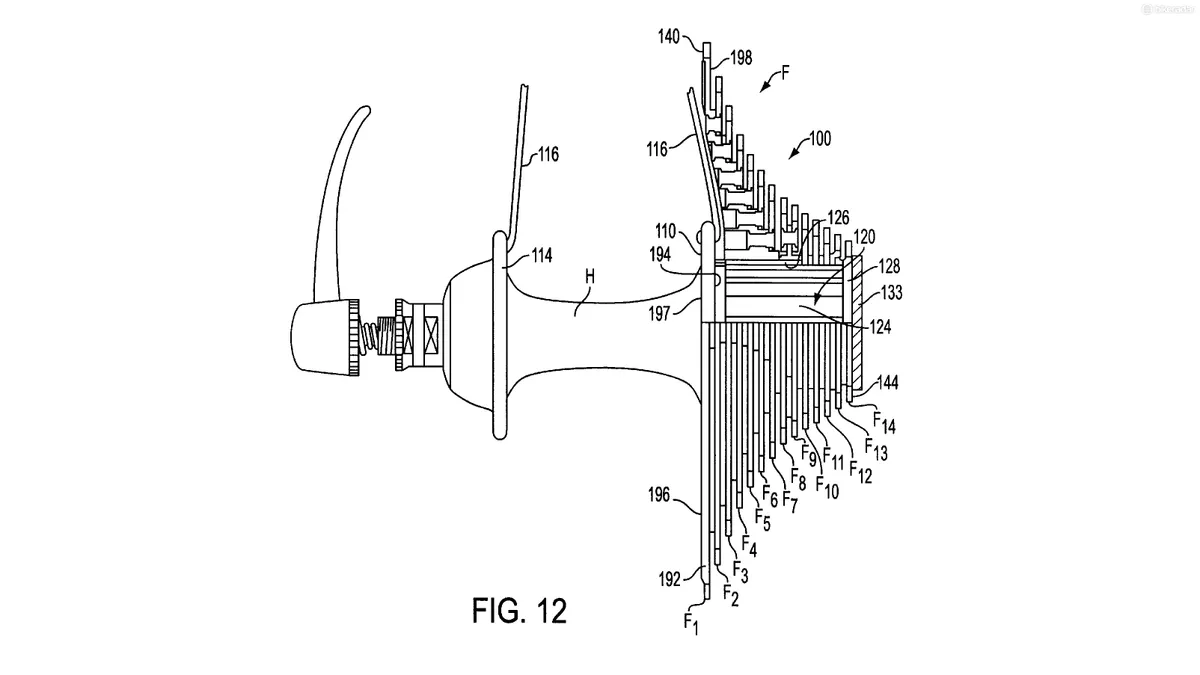
What’s remarkable is that the patent suggests that this massive number of cogs could be jammed into a space “of less than or equal to approximately 47mm”, which is roughly the same width as a SRAM Eagle cassette.
The sprockets of this (potentially) 14 speed cassette would have a “thickness less than or equal to approximately 1.8 millimeters”, which is actually not any narrower than the cogs on a 9-speed cassette, according to Sheldon Brown.
Where the proposed cassette differs is how narrow the spacing between each cog is, with the patent suggesting that the “spacing between each pair of adjacent sprockets... [could be] less than the thickness of each sprocket”, perhaps as narrow as “1.66mm”.
This is far, far narrower than we see today — even a SRAM Eagle cassette, today’s most dense cluster of cogs, has a spacing of 3.65mm between each sprocket.

The patent also shows the very largest sprockets dished over the spokes, a design that Shimano has actually adopted in recent years with its 11 speed mountain bike drivetrains and the newest 34t Ultegra cassettes.
So whaddabout dat chain?
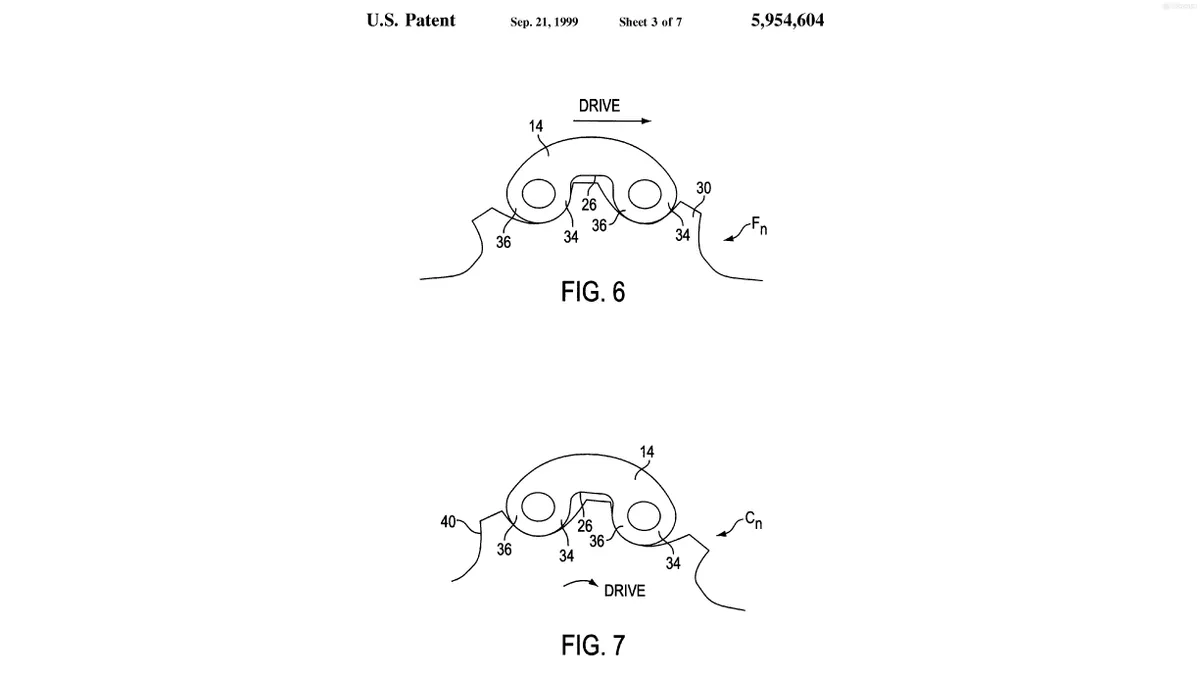
The whole 14 speed "plurality of sprockets" thing is cool and all, but what’s really interesting is the totally unique design of the chain that is designed to go with the tightly packed cassette.
The chain described here doesn’t use rollers between each link, and instead uses a hump shaped inner plate that is completely solid. The inner profile of this link is the drive face of the chain and “performs the function performed by the roller in conventional chains”.
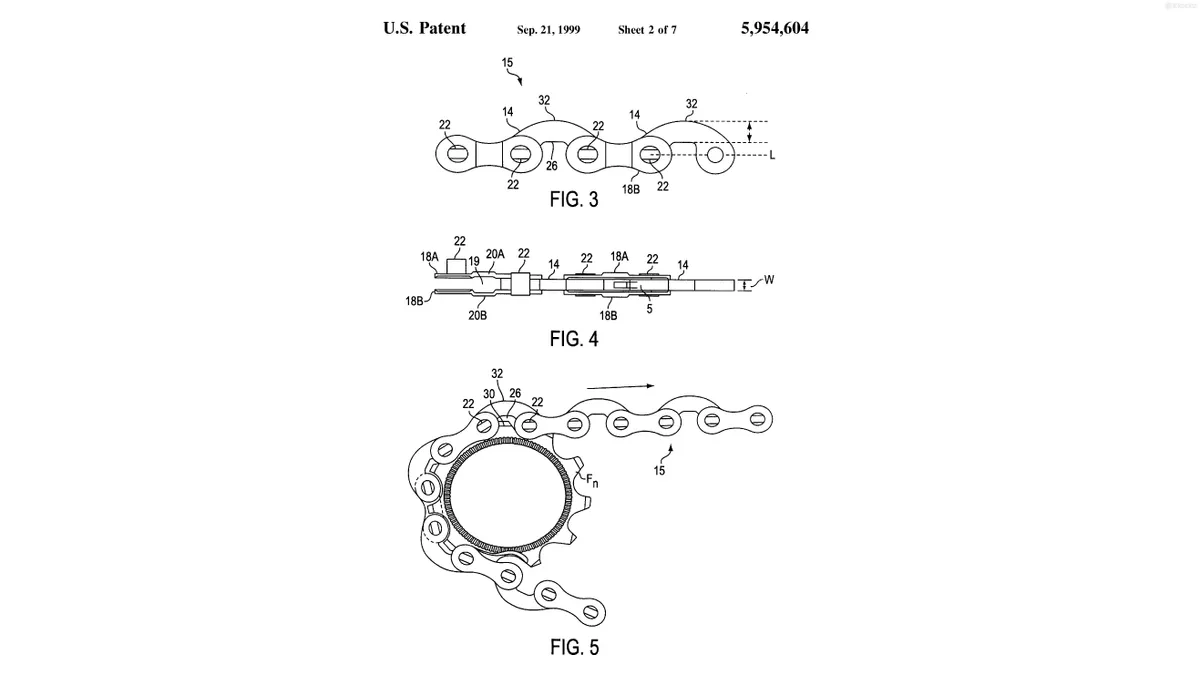
As well as allowing Shimano to massively reduce the width of the chain, the patent claims that as “each fastener is sandwiched between pairs of adjacent sprocket teeth” a more “stable contact of each drive face and reliable driving of the chain is obtained”.
The patent also goes on to suggest that the drive face of these links could even be “contoured to match the rear and front surfaces... of the teeth they contact”, something that isn’t possible with a conventional roller.

This design of course throws up all sorts of interesting issues, namely the profile of the upper jockey wheel, which has to be shaped into a kind of sheriff star like profile to accommodate the humped back of the link.
How likely is it that 14 speed will happen?
Cycling tech and market forces move at an astonishing pace, and given it was filed in 1999, this patent is essentially ancient history.

For example, the patent describes a 14 speed drivetrain matched with a front derailleur; how well this design would cope with the extreme angles imposed by a modern 1x drivetrain — 1x setups would benefit most from the increased range and smaller steps of a 14 speed drivetrain — isn’t tackled.
The idea of essentially reinventing the chain is also remarkable; the industry at large near enough has an aneurysm when a new hub standard is announced, let alone changing something that has remained pretty much the same for forever.
Regardless, this is still an interesting concept and perhaps a sign of what we may see in the future.
Speaking more broadly, I have no doubt in my mind that we’re going to see 14 speed drivetrains pop up in the future — yes, I know 2x7 was a thing, no need to comment saying so — but exactly how much it will look to this design is impossible to say.
With that said, this particular patent also expires in September 2019, so you never know, maybe there’s a host of other companies waiting in the wings, gunning to capitalise on something that’s been hiding in plain sight since the turn of the millennium.
What do you think? Should something as fundamental as the chain be left well alone? Or is it about time we rethink how we drive our bikes altogether? Or are you quite happy with your 8 speed drivetrain thank-you-very-much? As always, leave your thoughts in the comments below.
